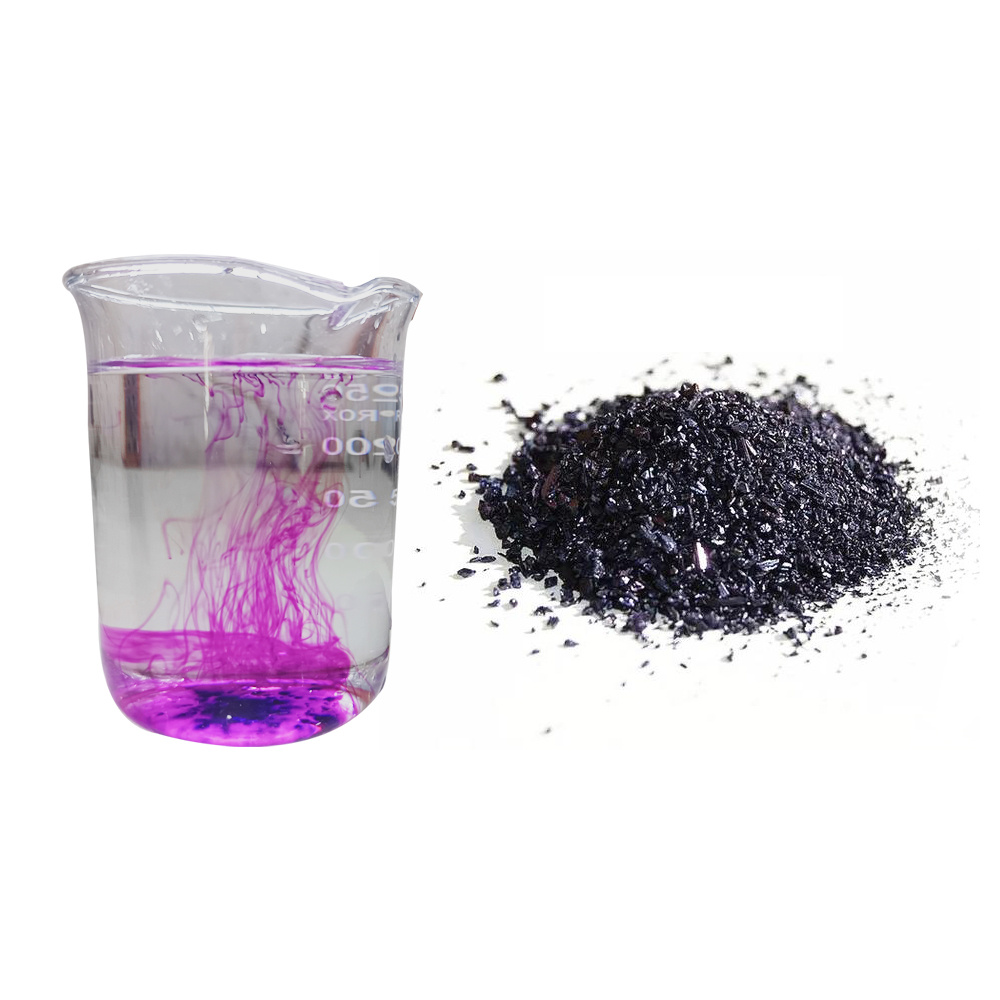
50kg package of dipped rubber ll type elastomer bag
Uses: Potassium permanganate is widely used in chemical industry, metallurgy, textile, pharmaceutical, water treatment, ocean intelligence, semiconductor, and electronics markets. In medicine, it is used as a disinfectant and antiseptic; in the pharmaceutical industry, it is used as an oxidizing agent; it is used as a decolorizing agent for starch, fabrics, and fats; it is used as a gas absorbent; and it is used as a water purifier.
Category:
Product Description
Basic Information
| Chinese Name | Potassium Permanganate |
| Chinese Alias | Gray Manganese Oxide; Potassium Permanganate |
| English Name | Potassium permanganate |
| Chemical Formula | KMnO4 |
| Molecular Weight | 158.034 |
| CAS Number | 7722-64-7 |
| EINECS Number | 231-760-3 |
Uses
In chemical production, it is widely used as an oxidizing agent, such as in the production of saccharin, vitamin C, isoniazid, and benzoic acid; in medicine, it is used as a preservative, disinfectant, deodorant, and antidote; in water purification and wastewater treatment, it is used as a water treatment agent to oxidize various pollutants such as hydrogen sulfide, phenol, iron, manganese, and organic and inorganic substances, controlling odors and decolorization. It is also used as a bleaching agent, adsorbent, colorant, and disinfectant. It has wide applications in various industries including metallurgy, military industry, printing and dyeing, electroplating, electronics, and medicine.
Physical Properties
| Melting Point | 240℃ |
| Density | 2.7/cm³ |
| Appearance | Dark purple crystals |
| Solubility | Soluble in water, alkaline solution, slightly soluble in methanol, acetone, and sulfuric acid |
| Water Solubility | 6.4/ML(20℃) |
Chemical Properties
It undergoes oxidative decomposition in ethanol and hydrogen peroxide.
Potassium permanganate is one of the strongest oxidizing agents. Its oxidizing ability is greatly affected by pH, being strongest in acidic solutions. The corresponding acid, permanganic acid (HMnO4), and anhydride, Mn2O7, are both strong oxidizing agents, capable of spontaneous exothermic decomposition and causing combustion when in contact with organic matter.
Hazards
Strong oxidizer, flammable, releases oxygen, easily combusts when encountering organic substances (such as glycerol, ethanol, hydroxylamine, polypropylene). Decomposes when encountering strong acids (such as hydrogen peroxide, sulfuric acid, hydrochloric acid, perchloric acid), releasing heat and causing combustion or explosion. Reacts violently with reducing agents, posing a fire and explosion hazard.
Storage
Store in a cool, ventilated, and dry warehouse. Keep away from fire and heat sources. The warehouse temperature should not exceed 40℃, and the container should be kept sealed. Should be stored separately from reducing agents; mixed storage is strictly prohibited. Stacking spacing and height must conform to regulations. Explosion-proof lighting and ventilation facilities should be used. Do not use machinery and tools that can easily produce sparks. The storage area should be equipped with emergency equipment for leakage handling and appropriate containment materials.
Emergency Measures
In case of fire, cut off the fire source and use dry powder, sand, or water to extinguish the fire. In case of leakage, immediately cut off the leak and recover with a container. Skin contact: Remove contaminated clothing, wash the skin with oxalic acid, then rinse with clean water. Eye contact: Immediately open the upper and lower eyelids, rinse with vitamin C injection, and seek medical attention. Inhalation: Quickly leave the scene, go to a fresh air place, keep the respiratory tract open, and administer oxygen if breathing is difficult; seek medical attention. Ingestion: Drink plenty of warm water, wash the stomach, and seek medical attention. If you feel unwell, call a poison control center or seek medical attention.
Parameters:
| Item | Indicator | |||
| Needle-like or granular | British Pharmacopoeia BP2000 | |||
| Superior Grade | Qualified Product | |||
| Potassium permanganate (KMnO4) w/%≥ | 99.4 | 99.2 | 99.0-100.5 | |
| Chloride (as CI) w/%≤ | 0.01 | 0.02 | 0.02 | |
| Sulfate (as SO4) w/%≤ | 0.05 | 0.1 | 0.05 | |
| Water-insoluble matter w/%≤ | 0.12 | 0.15 | 1 | |
| Cadmium (Cd) w/%≤ | - | - | - | |
| Chromium (Cr) w/%≤ | - | - | - | |
| Mercury (Hg) w/%≤ | - | - | - | |
| Flowability | - | - | - | |
| Moisture w/%≤ | 0.5 | 0.5 | - | |
| Particle Size | 425µm residue w/%≤ | - | - | - |
| 75µm undersize w/%≤ | - | - | - | |
Online Inquiry
High-purity potassium permanganate
Uses: Potassium permanganate is widely used in chemical industry, metallurgy, textile, pharmaceutical, water treatment, ocean intelligence, semiconductor, and electronics markets. In medicine, it is used as a disinfectant and antiseptic; in the pharmaceutical industry, it is used as an oxidizing agent; it is used as a decolorizing agent for starch, fabrics, and fats; it is used as a gas absorbent; and it is used as a water purifier.
50kg package of dipped rubber ll type elastomer bag
Uses: Potassium permanganate is widely used in chemical industry, metallurgy, textile, pharmaceutical, water treatment, ocean intelligence, semiconductor, and electronics markets. In medicine, it is used as a disinfectant and antiseptic; in the pharmaceutical industry, it is used as an oxidizing agent; it is used as a decolorizing agent for starch, fabrics, and fats; it is used as a gas absorbent; and it is used as a water purifier.





